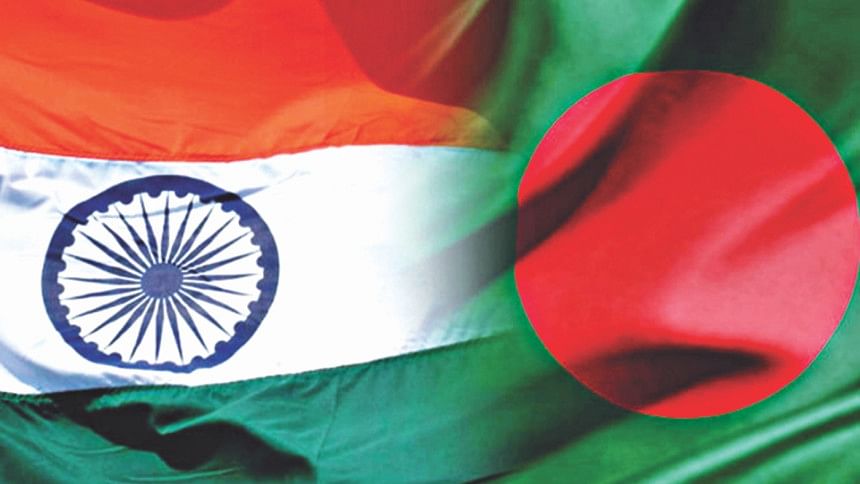Revisiting the 1996 Ganges Treaty

India and Bangladesh sharing 54 trans-boundary rivers as a result water dispute is a main concern between them. However, the conflict has been primarily centered on the sharing of the waters of Ganges, Teesta, Tipaimuk dam on the Barak River and India's river linking project which have been a bone of contention between two countries. Since, Bangladesh is the downstream country the quantum of water; it has access to dependent on India which is the upper riparian. Bangladesh has repeatedly contended that India has carried out 'unilateral diversion' of the waters, thereby adversely affecting the water flow in Bangladesh.
The dispute over the sharing of river waters between India and Bangladesh originated in 1951 when Bangladesh was the part of Pakistan, because India decided to construct a barrage at Farakka. However, Pakistan opposed the construction of the Farakka Barrage in 1951 and series of correspondences they were subsequently exchanged. Between 1960 and 1970, several meetings were held where two countries shared substantial amount of data. In 1970 India for the first time acknowledged Ganges as an International river. Following the independence Bangladesh signed the Treaty of Friendship, Cooperation and Peace with Indian in 1772 for the promotion of goodwill between the countries. Article VI of the treaty provides, “both the nations agree to take joint action in the field of flood control, river basin development and development of hydroelectric power and irrigation”. Pursuant to this treaty an Indo bangle Joint River Commission was established in 1972 for carrying out a comprehensive study of the river system.
Farakka Barrage was completed in 1971 and became operational in 1975. In 1975 India and Bangladesh signed a temporary allocation agreement which was valid only for a period of 41 days; as a result Bangladesh raised the Farakka issue at the 31st session of the UN General Assembly in 1976. Afterward a bilateral discussion between India and Bangladesh resulted in the formation of water sharing agreement in 1977 but the agreement entered into only for the duration of five years. A significant feature of the treaty was Article 2 it provided a 'guarantee clause' for Bangladesh by assuring it a minimum of 80 percent of its shares during the lean period and further reinforces in Article 12 Bangladesh's share of water cannot be reduced under any circumstances till the duration of the treaty. When the 1977 agreement lapsed in 1982, they signed two memorandum of understanding (MOU) in 1982 and 1985 but it did not include a minimum of 80 percent 'guarantee clause'. After the expiry of this MOU, a vacuum remained till the water sharing treaty in 1996 was concluded.

The Ganges water treaty does not provide a minimum 'guarantee clause', which was in 1977 agreement. In present Article II of treaty simply mentioned that “In the event flow at Farakka falls below 50,000 cusecs in any 10-day period, the two Governments will enter into immediate consultations to make adjustments on an emergency basis, in accordance with the principles of equity, fair play and no harm to either party”. The dispute resolution mechanism mentioned in Article VII “The Joint Committee shall be responsible for implementing the arrangements contained in this Treaty. Any difference or dispute arising in this regard, if not resolved by the Joint Committee, shall be referred to the Indo-Bangladesh Joint Rivers Commission. If the difference or dispute still remains unresolved, it shall be referred to the two Governments which shall meet urgently at the appropriate level to resolve it by mutual discussion”.
The dispute resolution mechanism has been extensively criticized because it does not provide an arbitration mechanism for settlement of the dispute, while two water sharing treaty of India with Nepal “The Mahakali Treaty 1996” and Pakistan “The Indus Waters Treaty 1960” embraced the arbitration mechanism. In fact, Article IX of the treaty stipulates that the “principle of equality, fairness and no harm to either party” shall guide the future action of both nations. The equitable utilisation theory is based on the Roman maxim “sic utere tuo ut alienum non laedas” which means “you use your own so as not to injure another”. The reflection of this theory is visible in Article 9 and 10 of the treaty between India and Bangladesh. This is evident in Articles 5-7 of UN Watercourses Convention 1997, as well as Articles IV-VIII of Helsinki Rules, 1966. This indicates the application of internationally recognised principle to the dispute, but the problem is that both the country is not a party of the UN Watercourse Convention 1997 which has entered into force17 August 2014.
There is growing concern that water flow in the region will be insufficient to meet future demands and there also proposals from upper riparian countries such as China to divert water for its own use which can further worsen the existing dispute. This highlights the need to hold multilateral negotiations or discussion on water sharing. Therefore, Bangladesh should focus on plugging the loopholes of the 1996 Treaty and ensure her demand like 'Minimum guarantee clause' and 'Arbitration mechanism' by invoking Article X 'review procedure' in consonance with international legal principles to meet its future demands.
The writer is Ph. D Research Scholar in Law at South Asian University, New Delhi, India.

 For all latest news, follow The Daily Star's Google News channel.
For all latest news, follow The Daily Star's Google News channel. 



Comments